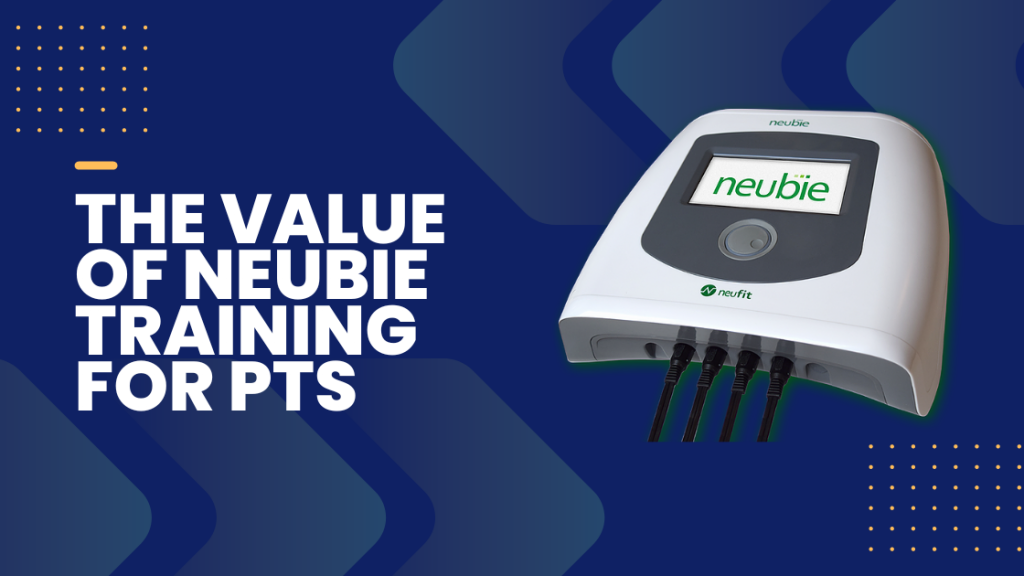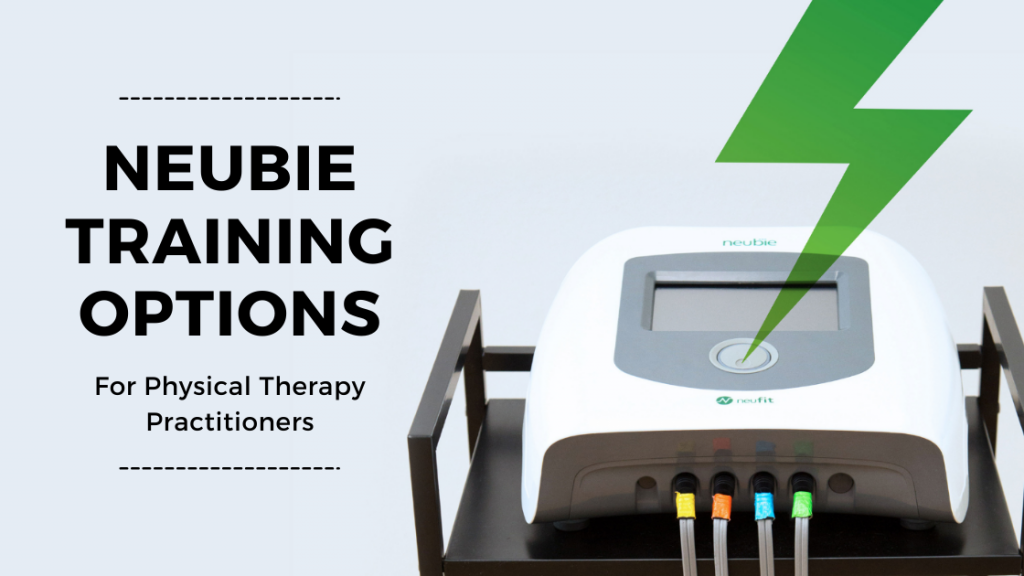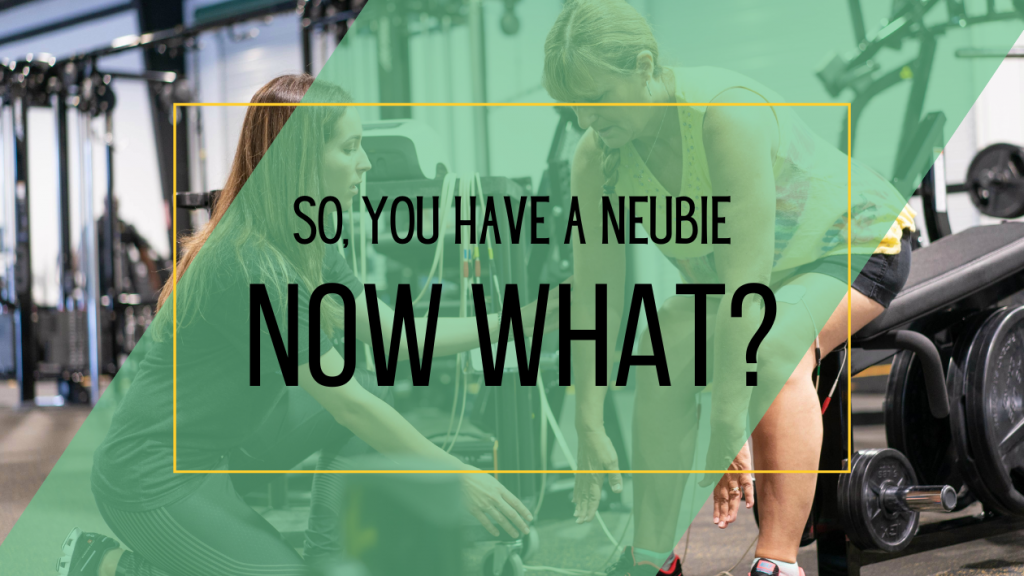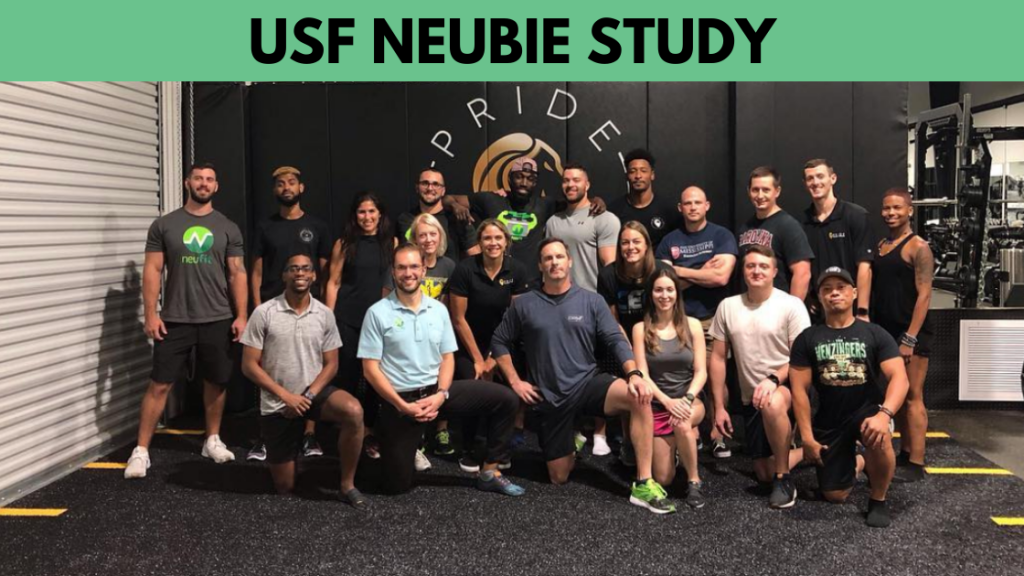
Peer Reviewed NEUBIE Study: NEUBIE Improves Muscle Training with Less Work
The research world regarding Neuromuscular Electrical Stimulation (NEUBIE) has been changing rapidly over the past few years. A recent study led by the University of South Florida presents the most substantial evidence that NEUBIE strength training can provide similar gains to traditional muscle training with less work.
This NEUBIE study, published in the peer reviewed Journal of Musculoskeletal and Neuronal Interactions offers excellent insight into this option for physical therapy practices and anyone interested in NEUBIE research and outcomes.
Both parts of the NEUBIE research study can be found below.
The Origin of This Peer Reviewed NEUBIE Study
Back in 2019, Jason Waz, Founder of NeuPTtech and owner of multiple clinics in Tampa, FL, introduced the NEUBIE to the University of South Florida team and led them through a NEUBIE training course with NeuFit and NeuPTtech to learn more. With growing evidence that muscle mass growth may not be entirely reliant upon the amount of high-load work the muscles are put through, the team decided to prove NEUBIE’s effect on this matter. Waz would be chosen as the Medical Director who oversaw the use of the NEUBIE in this study.
“It was really incredible to see the research process play out as the Medical Director of the study. Starting with the early intro of the NEUBIE to training the USF research team in proper use of the device, then waiting and waiting and waiting some more, eager to see what the scientific results would be.”
Jason Waz
Two years later, the 2022 study “The acute muscular response following a novel form of pulsed direct current stimulation (Neubie) or traditional resistance exercise” was published. It was conducted by Ecaterina Vasenina, Ryo Kataoka, William B. Hammert, Adam H. Ibrahim, Samuel L. Buckner of the USF Muscle Lab, Exercise Science Program of the University of South Florida, Tampa.
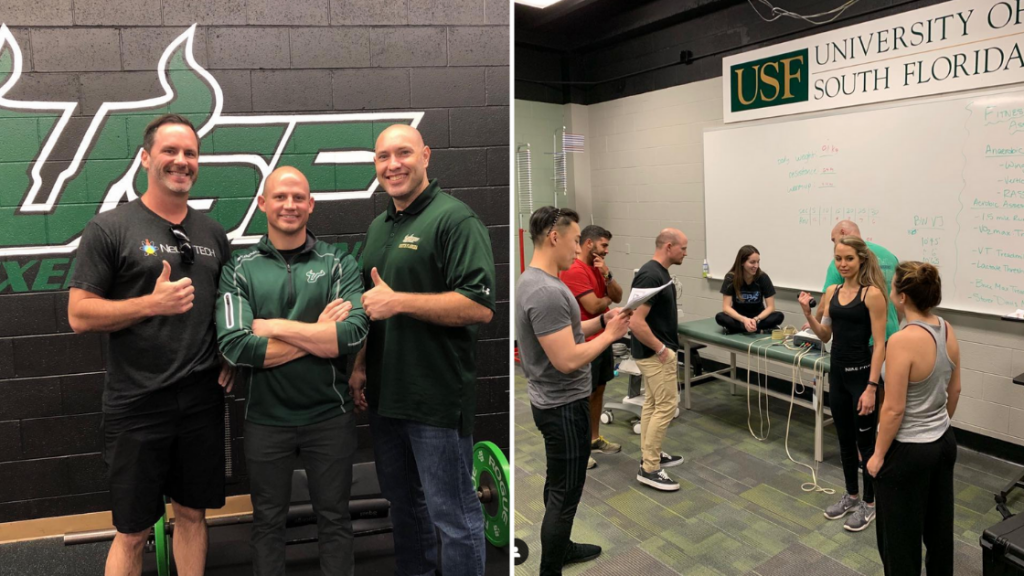
RIGHT: Teaching the USF Research Team
The core of the study revolves around the idea that there is growing evidence that muscle hypertrophy does not rely on the exercise load itself. According to the study, “maximal muscle growth will occur in the presence of sufficient muscle activation and/or fatigue development” (Vasenina et al.).
Proven NEUBIE Research
For physical therapy practitioners, this NEUBIE research study suggests that there are alternatives to traditional resistance training without external loads, such as weights or resistance training.
Neuromuscular Electrical Stimulation plays an essential role here. For example, one study observed that “voluntary maximal contractions of the biceps muscles throughout the range of motion (termed ‘NO LOAD’ training) resulted in muscle growth similar to that of traditional high load resistance exercise” (Vasenina et al.). The nature of these could be helpful in physical therapy patients with mobility challenges.
The current peer reviews on NEUBIE research is limited, so this study is vital in understanding how this specific form of pulses DC electrical stimulation can build or maintain muscle mass. This has been shown to be especially helpful in the clinical environment over the past 3-4 years for patients in recovery as they can be limited in mobility and traditional therapy options.
“Having seen very positive outcomes over and over in the clinical environment across the last four years with the NEUBIE, it’s great to see some validation in the research supporting the clinical evidence.”
Jason Waz
The Peer Review NEUBIE Study Results
The peer review NEUBIE study results, established over a series of trials, have proven very enlightening. The tests themselves were conducted to measure responses after using pulsed electric currents. Specifically, as stated in the study:
The purpose of this study is to examine acute changes in muscle thickness, perceptual responses and isometric torque before, immediately following, 24 hours following, and 48 hours following NO LOAD exercise with pulsed direct current (Neubie) and HIGH LOAD exercise without pulsed direct current in the upper body. (Vasenina et al.)
As for the results, they were presented in critical categories and measurements. These results are also quite fitting metrics to consider for a physical therapy session.
To hear more about the study, listen to this NeuFit Undercurrent Podcast featuring Dr. Buckner:
The NEUBIE Effect on Muscle Thickness
The study points out that it is unclear if muscle swelling is a mechanism for muscle growth or merely a side-effect. However, the NEUBIE research study results suggest that such an increase in muscle thickness corresponds to other cases where swelling is associated with growth.
Muscle swelling is not a specific indicator of growth but is frequently associated with signs of change. Such swelling was observed in the results of this study.
It is important to note that there seemed to be comparable patterns of muscle swelling across NEUBIE and traditional conditioning.
The NEUBIE Effect on Isometric Torque
The study indicated that “the measures of isometric torque were used as a surrogate for fatigue (immediately following exercise) and muscle damage (24 and 48h following exercise)” (Vasenina et al.).
The observed results show a decrease in isometric torque in both conditions with traditional conditioning following immediate exercise, then 24 to 48 hours later with a slight decline. This indicated standard conditioning was more fatiguing overall. In the case of NEUBIE training, the researchers observed that the initial fatigue following the workout, measured through isometric torque, was less overall.
These results suggest that long-term NEUBIE training could lead to growth with minimal fatigue post-exercise. Even after 24 to 48 hours, the torque level suggests there is an element of muscle damage in NEUBIE therapy, indicating muscle growth.
The study does bear the caveat that further research is necessary, however.
The NEUBIE Effect on Soreness
Muscle soreness was present after both traditional and NEUBIE conditioning immediately after exercise and 24 and 48 hours later. Curiously, the data gathered by the study seems to indicate the NEUBIE conditioning resulted in more significant soreness at the 48 hours point after training.
One reason for this, indicated in the study, suggests that: “Additionally, training with electrical stimulation has been associated with lactate formation and increased acidification compared to voluntary contraction, which, in turn, might result in greater metabolic stress which may also play a role with exercise-induced muscle damage” (Vasenina et al.). As soreness can be considered an indicator of muscle growth, this is a promising sign for NEUBIE therapy in practice.
The NEUBIE Effect on Blood Pressure
Another area of similarity between the studies was measuring blood pressure. There was no apparent difference in blood pressure between the traditional and NEUBIE exercise groups. A minor difference came with the usage of resistance training, but it was negligible overall.
The NEUBIE Effect on Exercise-Induced Feelings
Interestingly, the study results indicated that the feelings evoked by both conditioning strategies were similar. The feeling of exhaustion and post-workout tension were readily apparent in both groups.
THE NEUBIE Effect on RPE and Discomfort
Given the physicality of traditional therapy, it is not surprising that the study results indicated a significant difference in RPE values between standard and NEUBIE conditioning. Specifically, there was a higher perceived exertion evoked in routine exercise because of the repetitive work. NEUBIE participation did not feel like it was as much work as the alternative.
The study also indicated that the discomfort associated with Neuromuscular Electrical Stimulation varied from individual to individual.
Latest NEUBIE Research Insights (2024)
A recent peer-reviewed study, "Muscular Adaptations Between Very Low-Load Resistance Training With Pulsed Direct Current Stimulation (Neubie) and Traditional High-Load Training," provides new evidence supporting NEUBIE training's effectiveness. The study compared muscle thickness, soreness, and isometric torque responses, showing that NEUBIE offers similar hypertrophy results to traditional resistance training with lower perceived exertion. Despite some differences in muscle swelling and soreness patterns, NEUBIE proves a valuable alternative for patients unable to perform high-load exercises, reinforcing its utility in physical therapy.
Enhancing NEUBIE Outcomes with Winback Therapy
Physical therapy clinics aiming to maximize the benefits of NEUBIE training are increasingly pairing it with Winback Tecar Therapy. Winback’s ability to reduce inflammation and improve circulation creates the ideal internal environment for neuromuscular re-education. This combination helps patients recover faster, reduces post-treatment soreness, and ensures NEUBIE’s stimulation protocols are even more effective — especially in cases where tissue healing and muscle activation must occur simultaneously.
The NEUBIE Study Conclusion
This is the first peer review research study that shows that the NEUBIE can be as effective as traditional strength training with less perceived work because it can train muscles without putting undue stress on ligaments, tendons and joints. The USF study essentially proves the NEUBIE works to build muscle without using weights and provides data to back the effectiveness of NEUBIE in this situation.
The results of this study are promising in establishing NEUBIE strength training as a viable option for treatment in physical therapy practices. As noted in the study, “a similar acute skeletal muscle response was observed between NEUBIE training and TRAD with some subtle differences observed in the time course of muscle swelling, changes in isometric torque, and muscle soreness” (Vasenina et al.)
This NEUBIE peer review study is a promising sign that Neuromuscular Electrical Stimulation is a viable option for physical therapy, specifically in aid of patients who may be limited in mobility.
To learn more about how the NEUBIE can improve patient outcomes at your practice, contact NeuPTtech today!
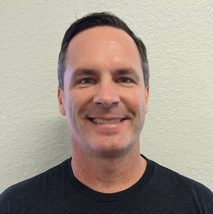

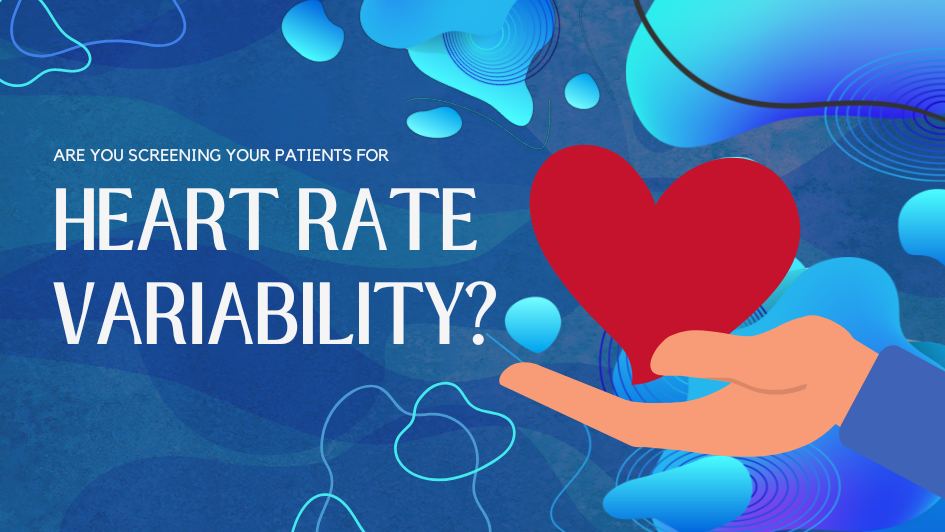 Previous Post
Previous Post Next Post
Next Post%20(13).png)
